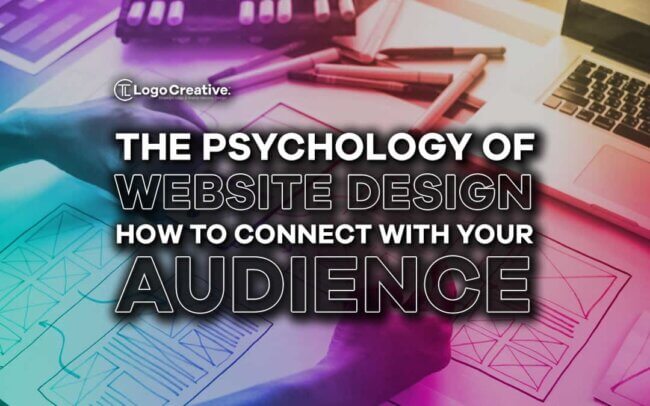Have you ever wondered why certain websites appeal to you more than others? It’s not just about aesthetics or functionality; it’s about the psychology behind the design.
Web design psychology is the art and science of creating a visually appealing website that connects effectively with your audience. It revolves around understanding how elements like colour and layout can influence how people perceive your brand.
This article will explore in detail the psychology of web design. It’ll provide you with practical tips on how to make your website more engaging and effective.
For more insights, you can visit this YouTube link for an in-depth look at effective web design practices:
With that in mind, the first element is the psychology behind website colours.
Table of Contents
1. Colour Psychology
Colour psychology explores the impact of colours on human behaviour and decision-making. Different hues can trigger various emotions and perceptions, influencing actions.
For instance, blue often conveys trust and reliability, making it a popular choice for banks, insurance companies, and others. On the other hand, red can create a sense of urgency, which is why it frequently features on call-to-action buttons.
When designing your website, use colours that align with your brand’s personality and the emotions you want to evoke in your audience. Also, stick to a consistent colour scheme so you don’t overwhelm your audience with too many colours.
2. Imagery
Dual-Coding Theory proposes that verbal and visual information are processed differently but can reinforce each other in memory. This principle applies not only to the images you use on your website but also to your logo.
Images, Images, be it on your website or in your logo design, can communicate complex ideas quickly and effectively. They can also evoke emotions and create a more immersive experience for your audience.
However, it’s essential to use high-quality, relevant images that align with your brand and resonate with your audience at an emotional level. If possible, steer clear of stock photos and use original ones to add authenticity to your brand.
3. Web Layout and Navigation
Hick’s Law states that the time it takes for an individual to make a decision increases with the number and complexity of choices. This is why a clean, intuitive layout with easy navigation can improve user experience and reduce decision-making time.
An intuitive layout makes it easy for visitors to find what they’re looking for, increasing their likelihood of staying longer on your site.
Aim for a clean, intuitive layout that seamlessly guides visitors through your site. Also, avoid cluttering your site with too many elements, as it can confuse and put off your audience.
4. Typography
The Aesthetic-Usability Effect suggests that users are more likely to perceive aesthetically pleasing design as more usable. Therefore, good typography on the website and your logo can enhance the overall aesthetic of your website.
You should consider choosing a font that’s easy to read and aligns with your brand’s personality.
For instance, a sophisticated serif font like Times New Roman can convey elegance and tradition for a luxury brand with a long history. In contrast, a tech startup could choose a clean, modern sans-serif font like Helvetica to reflect innovation and efficiency.
Also, maintain consistency, as too many fonts might make your site confusing to readers. Ideally, two or three at most can work.
5. Consistency
The Mere-Exposure Effect is a psychological principle indicating that familiarity often breeds liking.
Applying this concept to web design, the consistent use of elements like colours, fonts, and imagery can help amplify brand recognition and favourability.
To best leverage this effect, avoid frequent changes in design elements. This can prevent confusion for your audience and keep your brand persona intact.
6. Social Proof
The Social Proof Principle states that people are more likely to engage in an act if they see others doing it. Showcasing testimonials, case studies, and reviews on your website can increase trust and encourage conversions.
Showcasing genuine, positive experiences from real customers builds credibility and encourages new visitors to engage with your brand. However, it’s crucial to maintain honesty and transparency in this process, as these are the foundations of lasting customer relationships.
Final Thoughts
Grasping the psychology of web design is a game-changer in crafting a website that resonates deeply with your audience. As you reflect on the insights shared in this article, consider the value professional web designers can bring to your brand.
Their expertise can aid in creating a visually appealing website that not only establishes but also deepens the connection with your audience. Therefore, consider investing in professional web design services to create a site that embodies your brand and resonates with your audience.
Join The Logo Community
We hope this article about The Psychology of Website Design: How to Connect with Your Audience has been helpful. If you would like more personal tips, advice, insights, and access to our community threads and other goodies, join me in our community.
You can comment directly on the posts and have a discussion with Andrew, the Founder of The Logo Creative.
*TIP – We recommend Skillshare to learn online. There are tons of classes for everything including graphic design, web design, marketing, branding and business-related courses. Get a free trial with our link and you won’t regret it Trust us!


